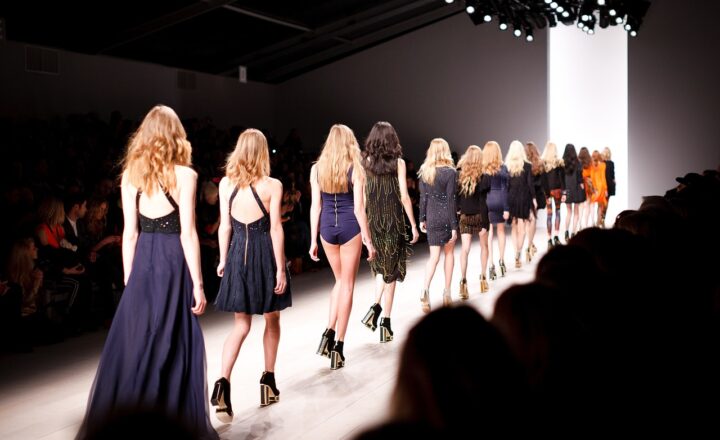The Rise of the Eco-Warrior: Sustainable Fashion Trends for the Modern Day
November 19, 2024

In recent years, a significant shift has occurred within the fashion industry, transforming the way we perceive and consume clothing. As environmental issues take center stage, the rise of the eco-warrior has become a beacon for sustainable fashion. Eco-conscious consumers are not just opting for stylish apparel; they are making informed choices that reflect their values and commitment to preserving our planet.
1. Understanding Sustainable Fashion
Sustainable fashion can be defined as an approach to fashion that aims to produce clothing, accessories, and footwear with minimal impact on the environment. This involves ethical production practices, the use of sustainable materials, and a focus on longevity and quality over quantity. The goal is to reduce waste, pollution, and environmental degradation while promoting a fair and just industry.
The sustainable fashion ethos encompasses a variety of practices, including:
- Ethical Production: Ensuring fair wages and safe working conditions for all workers involved in the manufacturing process.
- Eco-friendly Materials: Utilizing organic, recycled, or sustainably sourced fabrics that minimize negative environmental impacts.
- Circular Fashion: Creating clothing that can be reused, recycled, or composted to extend its life cycle and reduce waste.
As consumers grow more conscious about their environmental footprint, sustainable fashion is gaining traction, positioning eco-warriors at the forefront of this movement.
2. The Rise of Eco-Friendly Materials
The materials used in fashion play a crucial role in its sustainability. Traditional materials like cotton and polyester can contribute to significant environmental harm due to resource-intensive production and pollution. However, forward-thinking fashion brands are now embracing alternative materials that have a lesser impact on the Earth.
Popular eco-friendly materials include:
- Organic Cotton: Grown without synthetic pesticides or harmful fertilizers, organic cotton reduces chemical exposure and promotes healthier farming practices.
- Tencel (Lyocell): Made from sustainably sourced wood pulp, Tencel is biodegradable and produced in a closed-loop system that recycles solvents, making it an eco-friendly alternative to conventional fabrics.
- Recycled Polyester: This innovative material uses plastic bottles and waste to create new fibers, reducing landfill waste and energy consumption dramatically compared to virgin polyester standards.
- Hemp: A highly sustainable crop that requires minimal water and no pesticides, hemp is a durable material with natural antibacterial properties, making it an ideal choice for eco-fashion.
As technology continues to progress, the fashion industry is also exploring innovative materials like bio-fabricated textiles, mushroom leather, and fabric made from food waste. By opting for these eco-friendly alternatives, consumers can support brands that prioritize the planet and sustainability.
3. The Impact of Fast Fashion
Fast fashion, known for its rapid production speed and low prices, has been a driving force behind the industry’s sustainability crisis. With the constant turnover of clothing styles, consumers are encouraged to buy more, wearing each piece only a few times before discarding it in favor of the next trend. This cycle leads to massive textile waste and significant environmental harm.
According to the Ellen MacArthur Foundation, the fashion industry is responsible for 10% of global carbon emissions and generates 92 million tons of waste annually. To combat this growing problem, eco-warriors are championing sustainable options that break the fast fashion cycle:
- Buy Less, Choose Wisely: Investing in high-quality, timeless pieces rather than fast fashion items can greatly reduce waste and improve sustainability overall.
- Second-Hand Shopping: Thrift stores and online marketplaces allow consumers to find unique items while contributing to a circular economy of reused clothing.
- Clothing Swaps: Organizing clothing swaps with friends or local community groups can help refresh wardrobes sustainably.
By understanding the detrimental impact of fast fashion, consumers can make conscious choices that support a more sustainable future for the fashion industry.
4. Emerging Sustainable Fashion Trends
With the growing focus on sustainability, several trends are emerging within the fashion landscape:
- Timeless and Minimalist Styles: The shift towards classic styles that transcend seasons promotes longevity and reduces the temptation to follow fleeting trends.
- Upcycling: The art of transforming pre-loved clothing into modern pieces not only minimizes waste but also encourages creativity among designers and consumers alike.
- Sustainable Activewear: Brands are increasingly offering performancewear made from recycled materials, catering to the athleisure demand while maintaining eco-friendly production practices.
- Gender-Neutral Fashion: As the fashion industry becomes more inclusive, unisex clothing lines emphasize versatility, reducing the need for gender-specific collections and minimizing waste generation.
These evolving trends reflect a significant cultural shift towards eco-consciousness, empowering consumers to align their fashion choices with their values.
5. Influencing the Future of Fashion
The eco-warrior movement is fueled by passionate individuals, brands, and organizations dedicated to driving change and encouraging sustainable practices. Celebrities and influencers are using their platforms to promote sustainable brands and inspire their followers to adopt eco-friendly habits. Notable names include:
- Emma Watson: Known for her work in promoting sustainable fashion and ethical brands, Watson frequently advocates for responsible consumerism.
- Stella McCartney: A pioneer in sustainable luxury fashion, her brand is entirely cruelty-free and committed to using organic materials.
- Livia Firth: Co-founder of Eco-Age, an ethical consultancy, Firth encourages brands and consumers alike to make sustainable choices.
With each eco-warrior raising awareness and promoting sustainable lifestyles, the future of fashion appears to be bright.
Conclusion
The rise of the eco-warrior signifies an essential transition in the fashion industry. As consumers become increasingly aware of the environmental impact of their choices, sustainable fashion is evolving from a niche market into a mainstream movement. Embracing eco-friendly materials, supporting ethical brands, and advocating for minimalism can contribute to a brighter, greener future in fashion.
Join the eco-warrior movement and make a conscious effort to embody sustainability in your fashion choices. By making informed decisions and supporting brands that prioritize our planet, you can play a vital role in preserving the environment while expressing your unique style. The time for change is now—will you answer the call?







